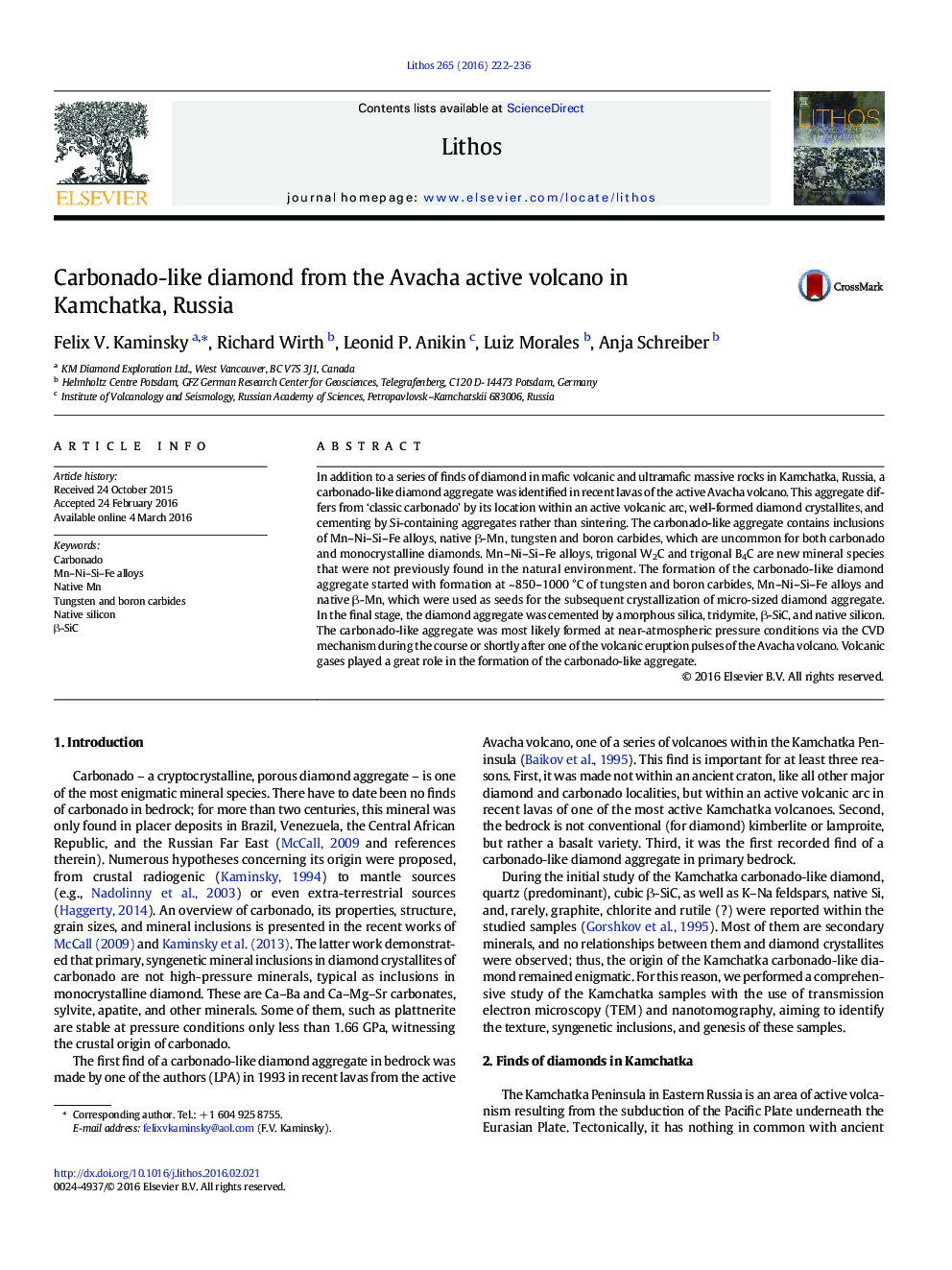| Article ID | Journal | Published Year | Pages | File Type |
|---|---|---|---|---|
| 5784312 | Lithos | 2016 | 15 Pages |
â¢Carbonado-like diamonds identified in lavas of the active Avacha volcano.â¢They contain inclusions of Mn-Ni-Si-Fe alloys, native β-Mn, WC, and BC.â¢The assemblage was formed via the mechanism of CVD.
In addition to a series of finds of diamond in mafic volcanic and ultramafic massive rocks in Kamchatka, Russia, a carbonado-like diamond aggregate was identified in recent lavas of the active Avacha volcano. This aggregate differs from 'classic carbonado' by its location within an active volcanic arc, well-formed diamond crystallites, and cementing by Si-containing aggregates rather than sintering. The carbonado-like aggregate contains inclusions of Mn-Ni-Si-Fe alloys, native β-Mn, tungsten and boron carbides, which are uncommon for both carbonado and monocrystalline diamonds. Mn-Ni-Si-Fe alloys, trigonal W2C and trigonal B4C are new mineral species that were not previously found in the natural environment. The formation of the carbonado-like diamond aggregate started with formation at ~ 850-1000 °C of tungsten and boron carbides, Mn-Ni-Si-Fe alloys and native β-Mn, which were used as seeds for the subsequent crystallization of micro-sized diamond aggregate. In the final stage, the diamond aggregate was cemented by amorphous silica, tridymite, β-SiC, and native silicon. The carbonado-like aggregate was most likely formed at near-atmospheric pressure conditions via the CVD mechanism during the course or shortly after one of the volcanic eruption pulses of the Avacha volcano. Volcanic gases played a great role in the formation of the carbonado-like aggregate.
